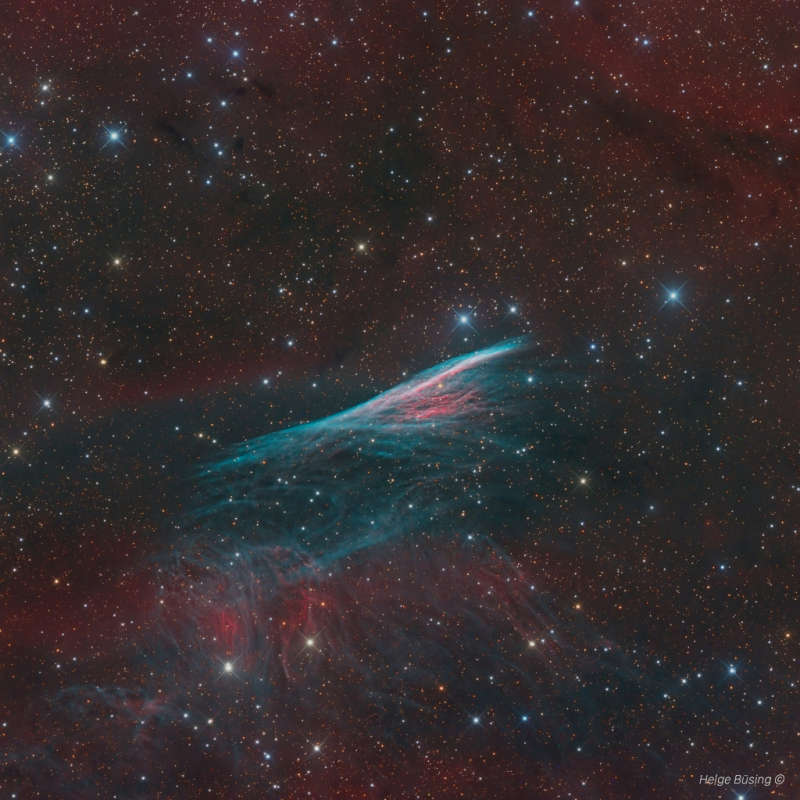Credit & Copyright: Helge Buesing
Explanation:
This supernova shock wave plows through interstellar space
at over 500,000 kilometers per hour.
Centered and moving upward in the
sharply detailed color composite
its thin, bright, braided filaments are actually long ripples
in a cosmic sheet of glowing gas seen almost edge-on.
Discovered in the 1840s by
Sir
John Herschel,
the narrow-looking nebula
is sometimes known as Herschel's Ray.
Cataloged
as NGC 2736,
its pointed appearance suggests its modern popular name, the Pencil Nebula.
The Pencil Nebula
is about 800 light-years away.
Nearly 5 light-years long it represents only a small part of the
Vela supernova remnant though.
The enormous Vela remnant itself
is around 100 light-years in diameter, the expanding
debris cloud of
a star
that was seen to explode about 11,000 years ago.
Initially, the section of the
shock wave seen as the Pencil nebula was moving
at millions of kilometers
per hour but has slowed considerably, sweeping up
surrounding interstellar material.
1999 2000 2001 2002 2003 2004 2005 2006 2007 2008 2009 2010 2011 2012 2013 2014 2015 2016 2017 2018 2019 2020 2021 2022 2023 2024 2025 |
Январь Февраль Март Апрель Май Июнь Июль Август Сентябрь Октябрь Ноябрь Декабрь |
NASA Web Site Statements, Warnings, and Disclaimers
NASA Official: Jay Norris. Specific rights apply.
A service of: LHEA at NASA / GSFC
& Michigan Tech. U.
|
Публикации с ключевыми словами:
туманность Карандаш - остаток Сверхновой - supernova remnant
Публикации со словами: туманность Карандаш - остаток Сверхновой - supernova remnant | |
См. также:
Все публикации на ту же тему >> | |
